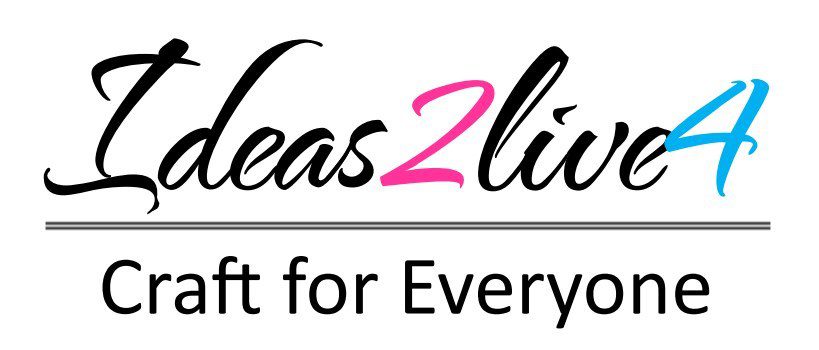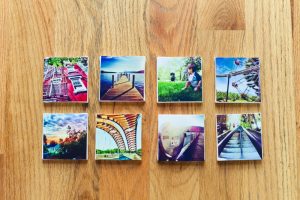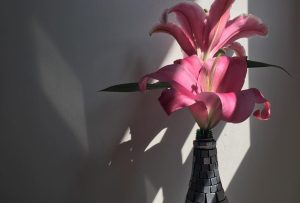Christmas is right around the corner. For me, it’s a time when gift-giving skills are usually put to the test. Personally, I like to plan because I don’t like the harried feeling of the Christmas rush. This allows me to give away thoughtful presents. I always try to give out something beautiful and functional, just so I know they don’t gather dust somewhere.

This year, I’m making wood-burned coasters. They’re great because every household uses them – for coffee, tea, beer, wine, and water. During the holiday season when celebrations are in full swing, these wood-burned coasters will surely come in handy. I’m pretty sure they’ll be put to good use.
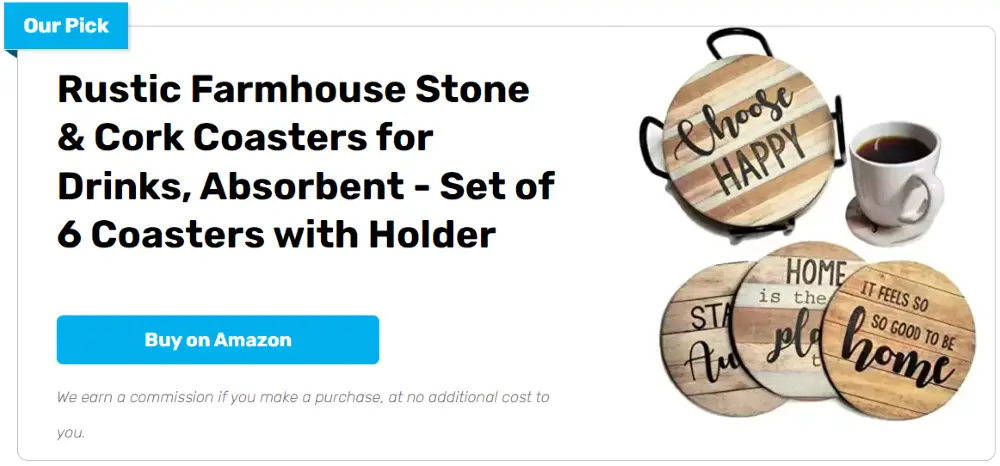
A piece of advice though, wood burning isn’t very easy. But with lots of practice, you’ll get the hang of it. And don’t forget to do this in an open space where there’s lots of ventilation, preferably outside. The strong smell coming from burning wood may be too much for some people.
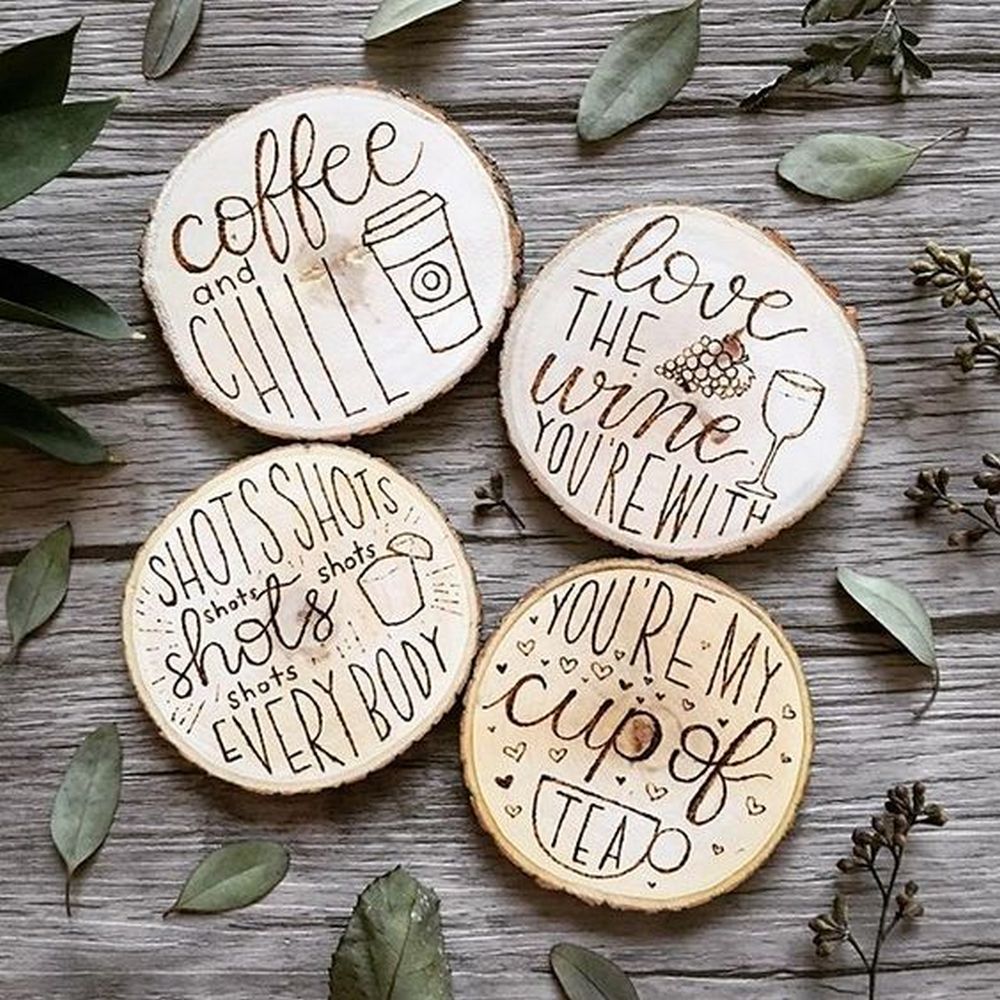
Contents
Crafting Your Wood-Burned Coasters
Materials
- Wood slices
- Spar Urethane Sealer
Tools
- Wood Burning Pen
Instructions
Step 1: Select Your Wood Slices
Choose wood slices that are flat and smooth. A wood piece with a diameter of less than five inches is much better for coasters. However, you can freely use any wood slices of different sizes. Ensure the wood is dry and clean.
Step 2: Prepare Your Design
Before you begin burning, sketch your design onto the wood slice using a pencil. This could be anything from simple patterns, initials, to more intricate designs. Use a stencil or transfer paper if you’re not confident in your drawing skills.
Step 3: Heat Up Your Wood Burning Pen
Plug in your wood burning pen and let it heat up. The time it takes to reach the desired temperature will depend on the model, so refer to the manufacturer’s instructions.
Step 4: Start Burning
Carefully trace over your pencil lines with the wood burning pen. Apply steady pressure and move slowly to ensure even burning. If your pen comes with different tips, experiment on scrap wood to see how each affects the wood before starting on your coaster.
Step 5: Refine Your Design
Once you’ve outlined your design, you can fill in areas, add shading, or make any adjustments to enhance the overall look. The key to beautiful wood burning is patience, so take your time.
Step 6: Clean the Coaster
After the burning is complete and the wood has cooled, gently brush away any residue with a soft cloth. If necessary, lightly sand the surface to remove any rough spots, being careful not to erase your design.
Step 7: Apply Spar Urethane Sealer
Protect your coaster and give it a finished shine by applying a coat of spar urethane sealer. You can efficiently apply the coating with a brush or a cloth. Follow the sealer’s instructions for drying time.
Step 8: Add Protective Pads (Optional)
For added protection, stick small adhesive felt pads or rubber feet to the bottom of your coasters. This step is optional but helps prevent the coasters from scratching furniture.
Step 9: Enjoy or Gift
Your wood-burned coasters are ready to be used or given as personalized gifts. Enjoy your handcrafted creations or share them with friends and family.
When you need visual instructions on making wood-burned coasters, below is a Youtube guide video.
Choosing the Right Wood for Wood Burning
Selecting the right type of wood is crucial for wood-burning projects, especially when crafting wood-burned coasters. The wood’s characteristics can significantly influence both the ease of the burning process and the final aesthetic of your coasters. Understanding the differences between various wood types helps ensure your coasters look beautiful and last longer.
Softwoods vs. Hardwoods
- Softwoods: Softwoods, like pine, cedar, and spruce, are generally easier to burn due to their lower density. They heat quickly, making them suitable for beginners. However, their pronounced grain can sometimes make detailed burning more challenging. For coasters, softwoods offer a rustic look but are more susceptible to wear and tear.
- Hardwoods: Hardwoods, such as maple, birch, and walnut, are denser and provide a smoother surface for burning. They require more time and heat to burn but offer more precision for detailed designs. Hardwoods are more durable, making them ideal for coasters that will see frequent use. Their fine grain enhances the elegance of wood-burned designs.
Grain and Texture
The texture and grain of your chosen wood profoundly impact the craftsmanship and aesthetic appeal of wood-burned coasters. Fine, even grains in woods like maple or cherry offer an ideal surface for detailed pyrography, allowing for precise control and uniformity in your designs. Such woods are particularly forgiving, making them perfect for projects requiring intricate details or for artists still honing their wood-burning skills.
On the other hand, woods with a coarse or irregular grain, such as oak, bring a unique character and depth to your work. These variations can beautifully frame and complement your designs, lending the coasters a natural and organic feel.
However, the uneven surface may pose challenges for achieving detailed work, potentially obscuring finer lines and making consistent shading more difficult. Thus, when selecting wood with a coarse grain, consider simpler, bolder designs that can work harmoniously with the wood’s natural texture.
Color and Finish
Wood’s inherent color and finish significantly influence the visual impact of your wood-burned coasters. Lighter woods, including birch and basswood, starkly contrast the darkened areas created by the burning process, making your designs pop and catch the eye.
These woods are excellent choices for projects where you wish to highlight the artistry of your designs, ensuring they stand out as the focal point of the coaster. Darker woods, such as walnut, exude elegance and sophistication, offering a rich, warm background that can enhance the perceived value of your coasters.
The subtle contrast between the burn and the wood’s natural color can create a refined, understated look, ideal for elegant patterns or text. When working with darker woods, consider designs that leverage the wood’s natural beauty, allowing the burn to add texture and depth rather than compete for attention.
Sustainability
Choosing sustainably sourced wood benefits the environment and adds a meaningful narrative to your wood-burned coasters. Certified by reputable environmental organizations, sustainable wood ensures that your crafting has a minimal ecological footprint, contributing to preserving forests and biodiversity.
Reclaimed wood pieces are another excellent choice, imbuing your coasters with history and character. Each piece tells a story, whether it’s wood salvaged from old buildings, driftwood collected from beaches, or scraps from other projects. These unique textures and histories enrich the final product, making each coaster a functional item and a conversation piece.
Furthermore, sustainably sourced or reclaimed wood can resonate with eco-conscious consumers, adding value to your wood-burned coaster creations. It reflects a commitment to environmental stewardship and responsible craftsmanship, qualities increasingly sought after in the market.
By highlighting the sustainable origins of your wood-burned coasters, you can connect with your audience on a deeper level, offering them not just a product but a piece of a larger narrative of sustainability and care.
Choosing the right wood for wood-burning coasters involves balancing aesthetics, functionality, and environmental considerations. Softwoods offer ease and a rustic appeal, while hardwoods provide durability and a refined canvas for detailed designs. The wood’s grain, color, and sustainability should also influence your choice. By carefully selecting the appropriate wood, you can enhance both the beauty and longevity of your wood-burned coasters, making them cherished items for years to come.
DIY Wood-Burned Coasters Design Ideas
Click on any image to start the lightbox display. Use your Esc key to close the lightbox.
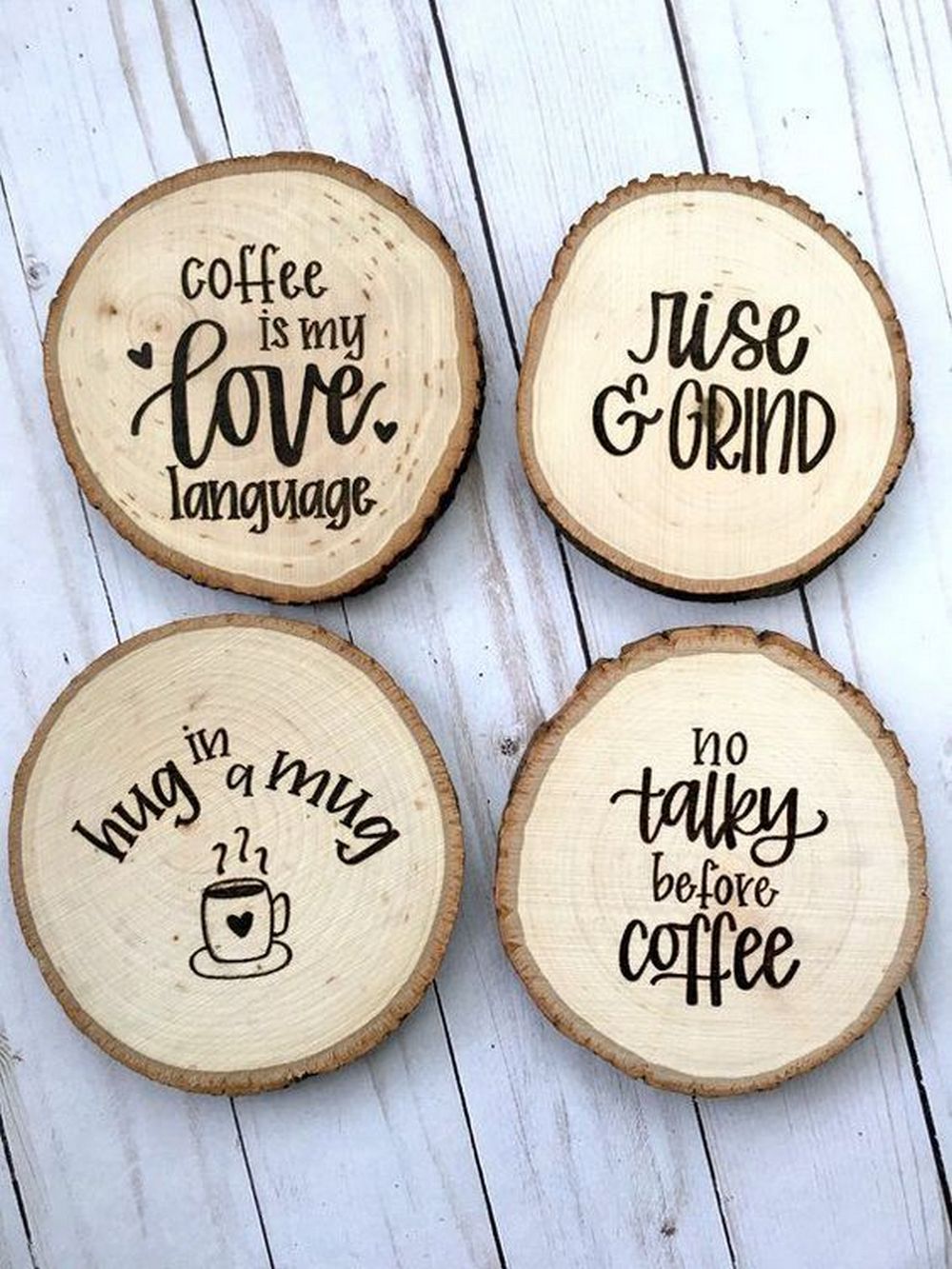

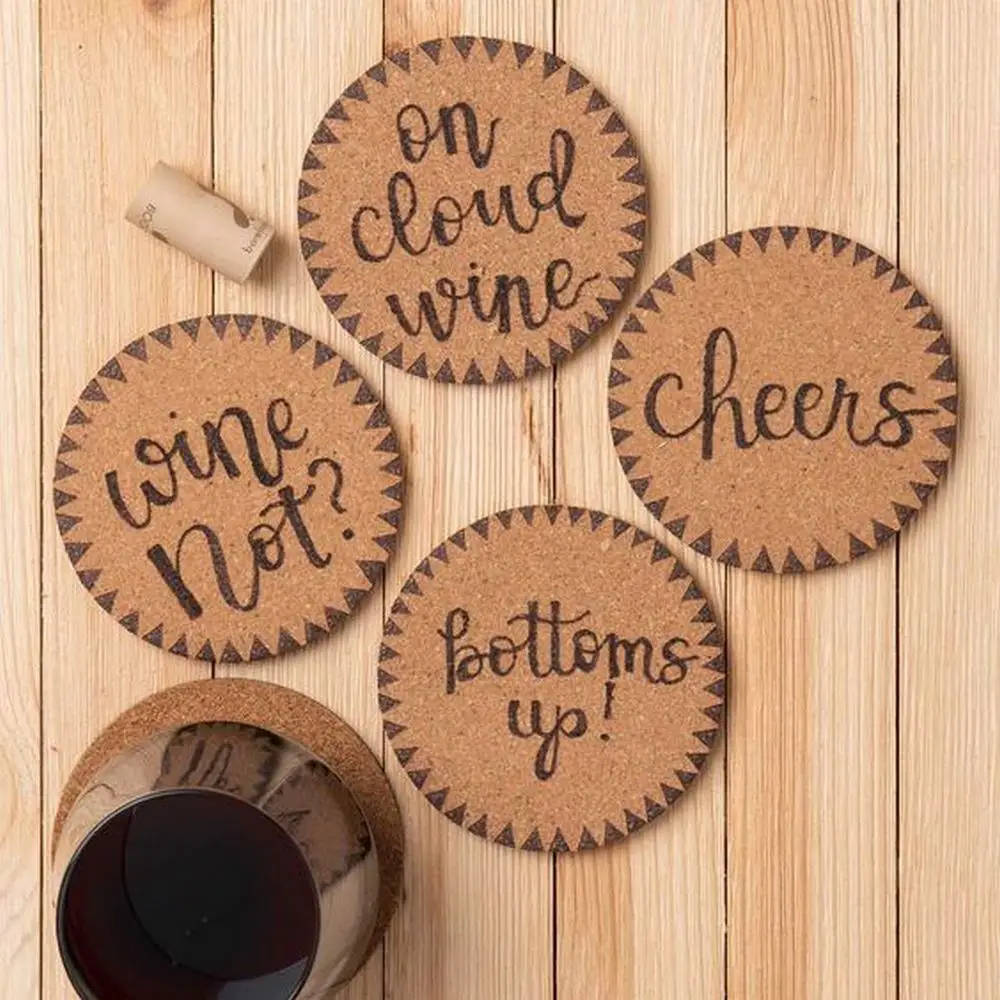
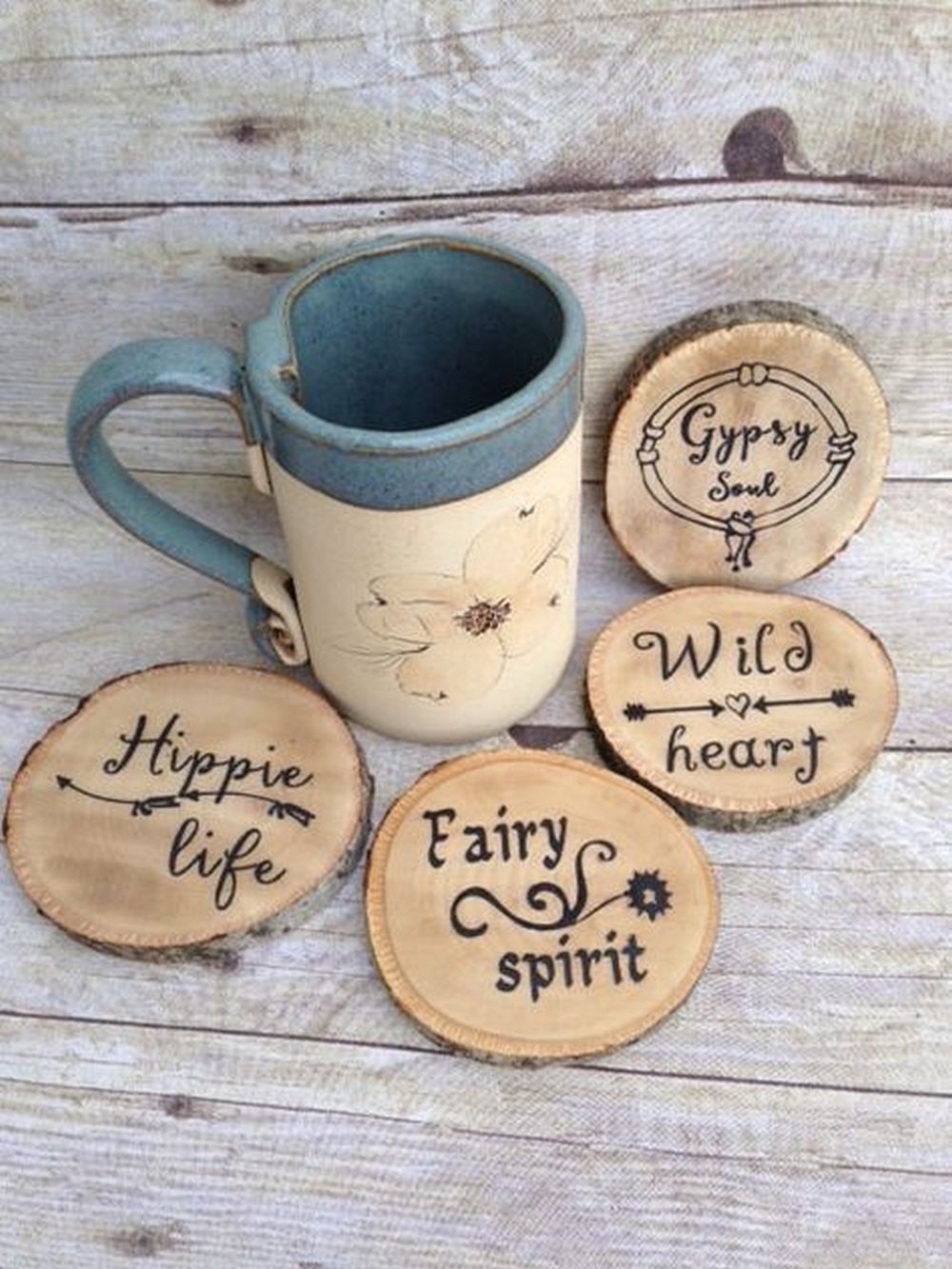

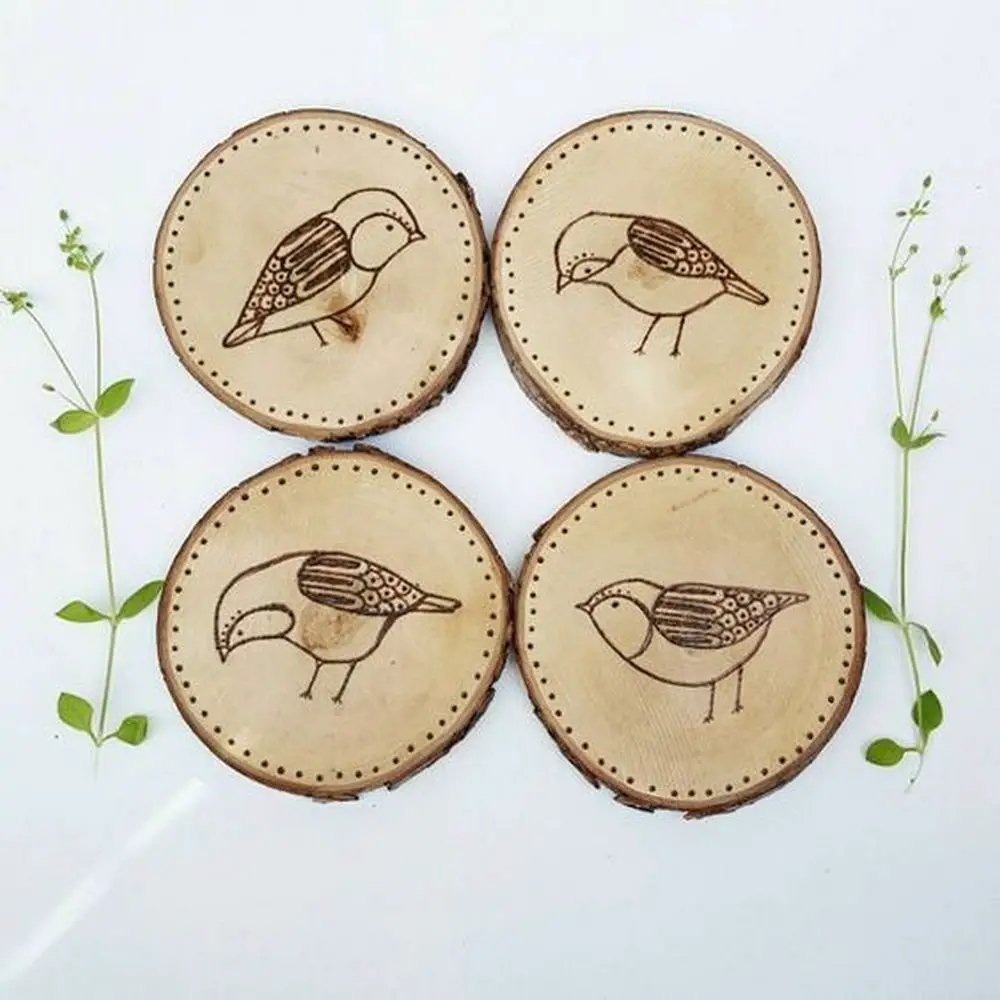


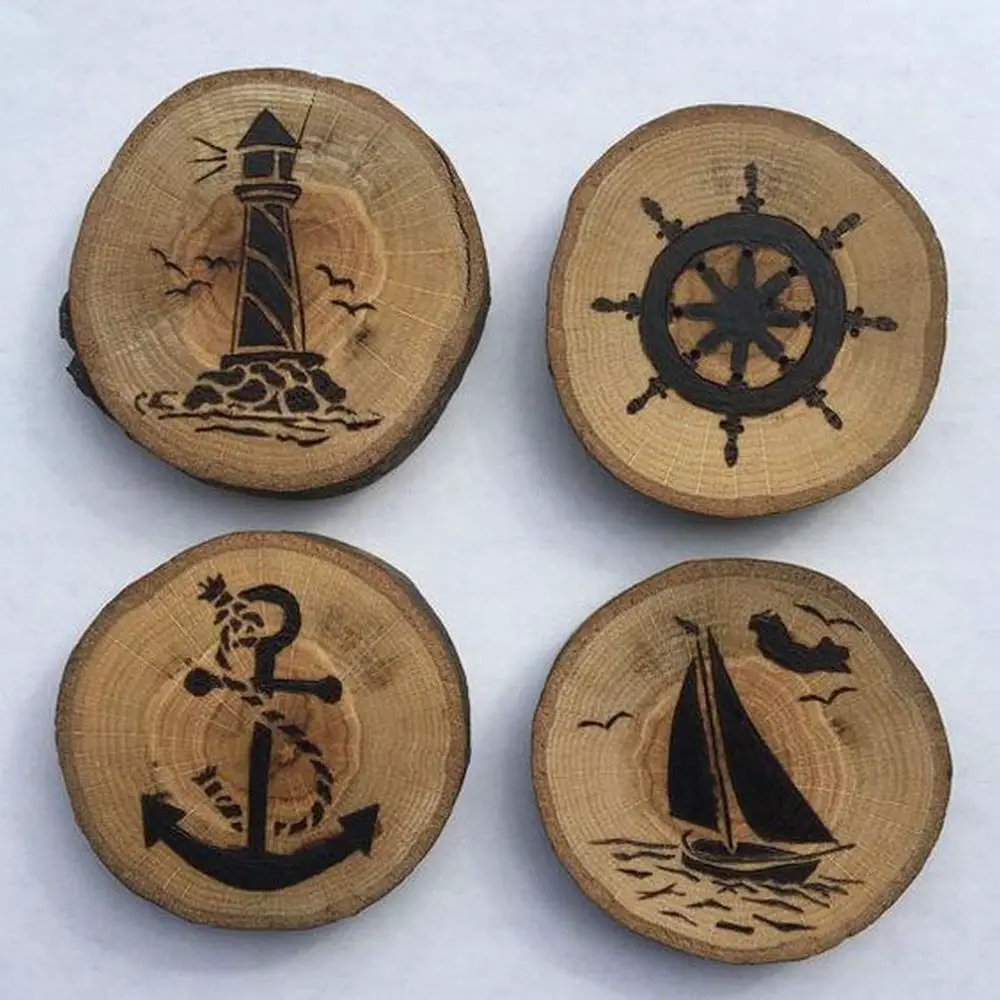
Safety Tips and Best Practices
Engaging in the art of creating wood-burned coasters offers a unique blend of creativity and functionality. However, the process involves handling heated tools and potentially hazardous materials, necessitating a serious commitment to safety and precision. Here are refined guidelines to ensure your crafting experience is productive and safe.
Prioritize Ventilation
By its nature, wood burning releases smoke and chemical fumes that can be harmful if inhaled in enclosed spaces. It’s imperative to choose a well-ventilated workspace, ideally outdoors. If indoors, ensure adequate airflow by opening windows or utilizing exhaust fans, effectively mitigating the risks associated with inhaling these fumes.
Protective Gear is Non-negotiable
The significance of wearing appropriate protective gear cannot be overstated. When burning wood, a high-quality respirator or dust mask is essential to prevent breathing in dangerous fumes and other particles.
Safety goggles protect the eyes from smoke and any unforeseen wood splinters. Furthermore, protective gloves can safeguard against accidental burns and exposure to sealants, enhancing safety without compromising dexterity.
Master the Wood Burning Pen
The wood burning pen, while a tool of artistic expression, demands respect for its potential to cause burns. Always place the pen in its holder when not in use to avoid accidental contact with its hot tip. Hold the pen securely but not too close to the tip to maintain control while minimizing heat exposure. Familiarize yourself with its operational nuances, including temperature adjustments, to enhance safety and effectiveness.
Immediate Access to First Aid
Despite all precautions, accidents can occur, highlighting the importance of having a comprehensive first aid kit readily accessible. Equipping yourself with knowledge on treating minor burns and cuts ensures that you can respond swiftly and efficiently, minimizing the impact of any accident.
Careful Application of Sealants
Applying sealants to your wood-burned coasters is a critical step for protection and aesthetics. However, many sealants release potent fumes that require careful handling. Due to the fumes coming from the sealant, only apply them in areas with good ventilation such as your garage. Adhere strictly to the manufacturer’s instructions for a safe and successful application.
A Clutter-Free Workspace
Maintaining an organized and tidy workspace is foundational to safety. This practice not only prevents accidents but also enhances efficiency and focus. Ensure all tools and materials are stored securely, out of reach of children and pets, and return them to their designated places after use. A methodical approach to your project not only safeguards your well-being but also enriches the overall crafting experience.
Understanding Chemical Properties
For any sealants, stains, or additional materials used in the finishing process of wood-burned coasters, it’s paramount to familiarize yourself with their Material Safety Data Sheets (MSDS). These documents provide critical information on the safe handling, potential hazards, and emergency response related to the chemicals. Knowledge of the MSDS ensures informed decisions, enhancing safety when working with various substances.
Regular Inspection of Tools
The condition of your wood burning pen and other auxiliary tools directly impacts the safety and quality of your coaster projects. Regular inspections for wear, electrical cord damage, or malfunctioning parts are essential. Addressing these issues promptly prevents accidents caused by equipment failure, ensuring a secure crafting environment.
Minimizing Inhalation Risks
Even with adequate ventilation, the localized evacuation of smoke produced during the wood burning process is crucial. Consider using a desktop smoke absorber or extraction fan positioned close to your working area. These devices help directly remove smoke at its source, significantly reducing the inhalation risk and maintaining a clearer view of your coaster work.
Preparation for Power Failures
In the event of an electrical failure or emergency, it’s important to have a clear plan for safely shutting down your equipment. This includes knowing how to quickly and safely disconnect your wood burning pen and any other electrical devices. An easily accessible power strip with an off switch can facilitate a swift shutdown, mitigating risks associated with sudden power surges or equipment malfunctions.
Controlled Environment
Creating a designated crafting area free from unnecessary distractions and hazards is vital. Ensure the space around you is clear of flammable materials, liquids, or any clutter that could interfere with your focus or the safety of your wood-burned coaster production. A controlled environment not only contributes to the precision of your work but also significantly lowers the chance of accidents.
Advancing Skills with Safety in Mind
As you delve deeper into making wood-burned coasters, continually seek opportunities for education and training. Workshops, online courses, and tutorials refine your artistic technique and emphasize advanced safety practices. Staying abreast of new methods and safety innovations ensures your crafting journey remains both fulfilling and secure.
Advanced Wood-Burning Techniques
Mastering the art of wood burning, especially when crafting intricate wood-burned coasters, opens the door to a world of creative possibilities. As your skills progress, exploring advanced techniques can elevate your coasters from simple designs to elaborate art pieces.
This section delves into sophisticated wood-burning techniques, empowering you to enhance your coaster projects’ detail, texture, and overall aesthetic.
Layering for Depth and Dimension
Layering involves gradually building up shades and tones to create depth and dimension in your wood-burned coaster designs. Start with lighter strokes to outline your design on the coaster, then progressively darken areas by going over them multiple times with the wood-burning pen. This technique is particularly effective for adding realism to natural scenes or giving a 3D effect to geometric patterns.
Texturing for Realism
Introducing texture to your wood-burned coasters can dramatically increase their visual appeal and tactile experience. Utilize different tips on your wood burning pen to mimic natural textures, such as the roughness of bark or the smoothness of stones. Experiment with dotting, cross-hatching, and varying the pressure to create unique effects that make each coaster a standalone piece of art.
Shading Techniques
Shading is crucial for adding softness and gradation to your wood-burned coaster designs. Practice using the side of your wood burning pen’s tip to gently shade areas with a lighter touch, creating gradients. This technique is invaluable for portraying light and shadow, giving your wood-burned coasters a more dynamic and lifelike appearance.
Color Embellishments
While the natural contrast of burnt wood is beautiful, adding color can bring a new dimension to your wood-burned coaster. After burning your design, use thin washes of watercolor or diluted acrylic paint to add subtle hues. The key is to enhance, not overwhelm, the burned design, preserving the wood’s natural texture and the burn strokes’ detail.
Script and Fine Line Work
Fine line work and script require a steady hand and precision when making wood-burned coasters. Use a fine-tip burning pen and practice maintaining consistent pressure for even lines. This technique is ideal for adding quotes, names, or intricate patterns to your coasters, transforming them into personalized gifts or commemorative pieces.
Sealing Techniques for Longevity
Once your advanced designs are complete, sealing your wood-burned coasters is essential to protect them from moisture and wear. Experiment with different finishes, such as matte, satin, or gloss, to enhance the visual impact of your work. Ensure the sealer is applied evenly and allows for the natural wood grain and your detailed work to shine through.
FAQ on Crafting Wood-Burned Coasters
Which wood is suitable for wood-burned coasters?
Hardwoods like maple, birch, or cherry are great wooden materials for your coasters. These woods provide a solid surface for detailed work and are durable enough for everyday use. Softwoods can be used but may offer less detail due to their softer, porous nature.
Can I color my wood-burned coasters?
Yes, adding color can enhance your designs. After burning, you can apply watercolors, colored pencils, or thin acrylic paints to add subtle hues. Ensure the paint is applied lightly to maintain the detail of the burned design and the wood’s texture.
Can wood-burned coasters be used with hot beverages?
Ensure your coasters are properly sealed to protect against heat and moisture. A high-quality sealer will help prevent warping or damage from hot cups.
How do I prepare the wood before burning?
Start by sanding the wood slices to a smooth finish, removing any rough areas or splinters. If desired, sketch your design lightly with a pencil or use transfer paper to apply a pre-drawn design.
Conclusion
Crafting wood-burned coasters combines artistic expression with practical functionality, offering a unique way to personalize home decor or create meaningful gifts. Patience is needed when learning how to burn beautiful and creative designs onto wood. As you explore various techniques and safety practices, each coaster becomes a testament to your creativity and skill.
